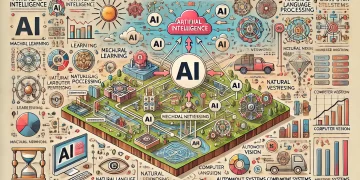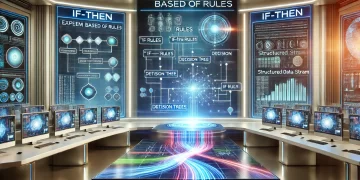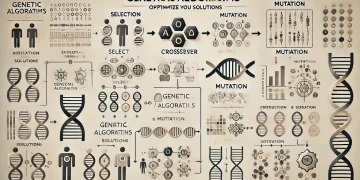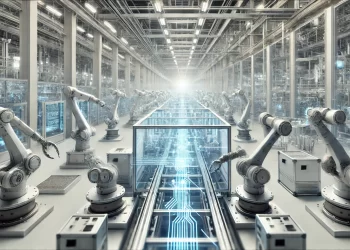Artificial Intelligence (AI) is playing a transformative role in the energy and utilities sector, optimizing energy generation, distribution, and consumption. With the rising demand for sustainable and efficient energy solutions, AI-driven technologies are revolutionizing how energy companies operate, reducing costs, and improving environmental sustainability. This article explores various AI use cases in the energy and utilities industry and how they contribute to a smarter, more resilient energy grid.
1. AI-Driven Smart Grid Optimization
AI enhances the efficiency of smart grids by analyzing energy consumption patterns, predicting demand fluctuations, and automating grid management. Machine learning algorithms detect inefficiencies and optimize energy distribution, reducing transmission losses and ensuring a balanced load across the grid.
2. Predictive Maintenance for Power Infrastructure
AI-powered predictive maintenance helps energy companies monitor the health of power plants, transmission lines, and substations. By analyzing sensor data and historical maintenance records, AI predicts equipment failures before they occur, reducing downtime and maintenance costs while improving safety.
3. AI in Renewable Energy Forecasting
Renewable energy sources, such as solar and wind, are highly dependent on weather conditions. AI-driven forecasting models use historical weather data and real-time analytics to predict energy generation accurately. This helps grid operators integrate renewables more efficiently, minimizing reliance on fossil fuels.
4. Energy Consumption Optimization
AI-powered demand response systems analyze user behavior and energy consumption patterns to optimize electricity usage. Smart meters and AI-driven energy management systems provide consumers with personalized recommendations to reduce energy wastage and lower costs.
5. AI in Energy Trading and Market Predictions
AI is revolutionizing energy trading by analyzing market trends, demand-supply fluctuations, and economic factors to predict price movements. Energy companies use AI-driven predictive analytics to make informed decisions on purchasing, selling, and distributing energy more efficiently.
6. Automated Grid Fault Detection and Response
AI-powered monitoring systems detect anomalies in the power grid, such as voltage fluctuations, equipment malfunctions, and cyber threats. AI automates fault response mechanisms, ensuring quick restoration of power and reducing outages for consumers.
7. AI in Nuclear Energy Safety and Monitoring
In the nuclear energy sector, AI plays a crucial role in monitoring radiation levels, optimizing reactor performance, and ensuring regulatory compliance. AI-driven risk assessment models enhance the safety and reliability of nuclear power plants.
8. AI for Water and Utility Management
AI optimizes water distribution and wastewater treatment by predicting demand, detecting leaks, and improving resource allocation. AI-powered sensors monitor water quality, ensuring regulatory compliance and preventing contamination.
9. AI in Carbon Emission Reduction and Sustainability
AI-driven analytics help energy companies track and reduce carbon emissions by optimizing fuel consumption, monitoring industrial processes, and recommending sustainable alternatives. AI also assists in carbon capture and storage (CCS) by identifying optimal sites for carbon sequestration.
10. AI-Enhanced Cybersecurity in Energy Infrastructure
Energy infrastructure is a prime target for cyber threats. AI-powered cybersecurity systems analyze network traffic, detect anomalies, and prevent cyberattacks on power plants, smart grids, and utility networks. AI enhances threat intelligence and response capabilities, safeguarding critical energy assets.
Conclusion
AI is reshaping the energy and utilities sector by improving efficiency, reliability, and sustainability. From smart grid optimization to renewable energy forecasting and predictive maintenance, AI-powered solutions are driving innovation and ensuring a more resilient energy future. As AI technology continues to evolve, its role in the energy sector will become even more critical in achieving sustainability and efficiency goals.
References
- International Energy Agency (IEA). (2023). “The Role of AI in Smart Grid Development.”
- McKinsey & Company. (2023). “How AI is Optimizing Renewable Energy Production.”
- World Economic Forum. (2022). “AI-Powered Energy Management Systems.”
- Gartner. (2023). “Predictive Maintenance in Energy: AI-Driven Solutions.”
- Deloitte Insights. (2023). “AI and Cybersecurity in Energy Infrastructure.”
- PwC. (2022). “The Future of AI in Carbon Emission Reduction.”




































